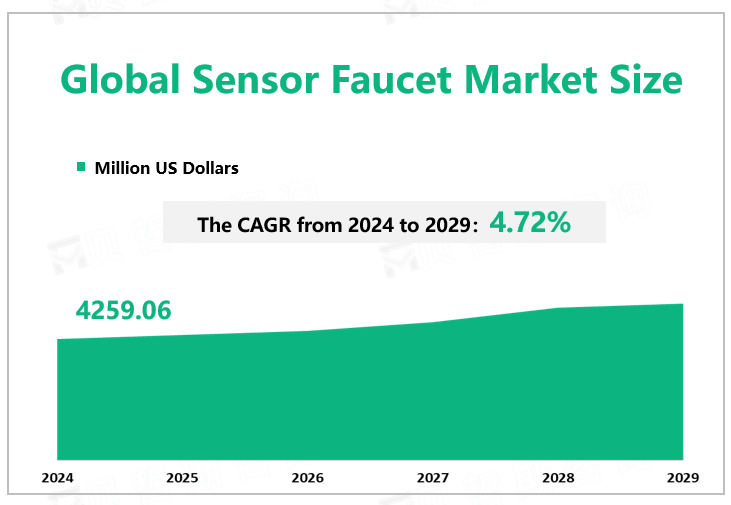Global Sensor Faucet Market Overview
Regional Market
The Asia Pacific region dominates the global market share of induction faucets. Increasing personal hygiene and sanitation in countries has promoted innovative automated mechanisms. North America will achieve market growth by automating residential and commercial Spaces. Europe is keeping the market growing by offering automatic hygienic lifestyle. The growing smart building concept is expected to drive the demand for inductive faucets in the global market in the coming years.
Type Segmentation
Infrared sensors are the most widely used sensor faucet products. It is based on the principle of infrared reflection. When the human hand is placed in the infrared area of the faucet, the infrared rays emitted by the infrared transmitting tube are reflected to the infrared receiving tube due to the blocking of the human hand. The signal is sent to the pulse solenoid valve. After receiving the signal, the solenoid valve opens the valve core according to the specified instruction to control the tap water. When the human hand leaves the infrared sensing range, the solenoid valve does not receive the signal, and the solenoid valve core is carried out by the internal spring Reset to control the water off of the faucet.

Market Drivers
The growing concern for hygiene and sanitation, especially in public and commercial Settings, has greatly driven the demand for inductive faucets that minimize contact and reduce the risk of bacterial transmission. The rise of smart home technology and the growing trend of automation and convenience in home devices further drives the market growth. Technological advances have led to the development of more reliable and energy efficient induction faucets, enhancing their appeal to residential and commercial users. In addition, the growing awareness of water conservation and the need for sustainable solutions support the use of these taps, which aim to reduce water waste through precise water flow control. Government regulations and incentives to promote water-saving technologies are also contributing to the market growth. These faucets come in a variety of designs and finishes to meet different aesthetic preferences, which supports their widespread adoption. Marketing strategies that emphasize the hygiene, convenience and sustainability benefits of inductive faucets are critical to increasing consumer interest.
|
S |
Increasing downstream demand Product performance is excellent and technology is constantly updated Wide range of applications, hospitals, hotels, etc. |
|
W |
High cost, high production cost and low profit margin Weakness Complex production process |
|
O |
The market demand is large, and the downstream demand is growing Emerging regions (China, India, etc.) continue to develop infrastructure, strong market demand |
|
T |
New entrants are hard to seize market share Many market participants and fierce competition |
We provide more professional and intelligent market reports to complement your business decisions.